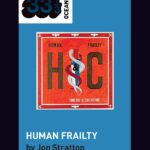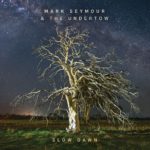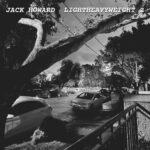All Music Guide Album Reviews
A series of album reviews published on Rolling Stone’s website from the All Music Guide.
Author: Various, All Music Guide.
Date: Various.
Original URL: http://www.rollingstone.com/
Hunters and Collectors (Bill Cassel)
Hunters & Collectors’ self-titled debut is seething art funk comparable to a harder-edged Shriekback or less political Gang of Four. The latter two bands were built on the bedrock of Dave Allen’s bass, and H&C’s sound is likewise often dominated by formidable bassist John Archer. At this stage of H&C’s career they were still working to develop an identity. The lyrics on Hunters & Collectors are stream-of-consciousness poetics that range from the merely incomprehensible to the downright silly, and singer Mark Seymour does not sound entirely comfortable delivering them. This would change in later years; Hunters & Collectors, meanwhile, is all about the muscular rhythms provided by Archer and drummer Doug Falconer. When they get hold of a good one, they motor right over the young band’s shortcomings. This album’s best moments are “Tow Truck,” “Talking to a Stranger,” and, especially, “Run Run Run,” an epic song that begins on a relentless beat, then shifts midway through to a hypnotic groove that builds to a towering crescendo.
The Jaws Of Life (Bill Cassel)
The Jaws of Life represented a breakthrough for Hunters & Collectors where their more ambitious artistic impulses were harnessed to melodic, concise, and structured songs. Less pretentious than Hunters & Collectors and less anarchic than The Fireman’s Curse, The Jaws of Life took a strategic step toward accessibility without sacrificing any of the band’s powerful intensity. While still predominantly dark, H&C’s music in this period showed a growing humanity that could even be called soulful. Who would have guessed that they were capable of such a convincing take on Ray Charles’ “I Believe to My Soul”? While Mark Seymour’s words on The Jaws of Life can hardly be called linear or narrative, they are considerably less random and more evocative than on previous albums, and his vocals benefit from increased restraint. H&C’s sound still rests squarely on the solid foundation of the Archer/Falconer rhythm section, with Seymour’s slashing rhythm guitar and The Horns of Contempt working in and around the grooves. A couple of ballads — “Hayley’s Doorstep” and “Carry Me” — and the anthemic “It’s Early Days Yet” show off the band’s increased range. On the whole, a superior and highly recommended record.
Human Frailty (Steve Kurutz)
Human Frailty is the sound of a band running on all cylinders. Though Hunters & Collectors had trouble melding their influences (funk, tribal rhythms, melodic hooks) into a cohesive sound in the past, on this 1986 album the band finally discovered their true strength; a balance of bass and drum-driven grooves set below punchy horns and counterpoint melody lines. “Is There Anybody in There?” is a particular standout with its unrelenting rhythm section. The band uses their three piece horn section to great effectiveness on “Everything’s on Fire” and the loping, lazy swing of “Relief.” Human Frailty is anything but and remains a great album to begin an association with the band’s music.
Living Daylight (Steve Kurutz)
This EP, included with the CD version of Human Frailty, picks up where that album left off. Rocking like a band possessed the group blisters through the first two tracks, singing and playing at top volume and intensity, before settling down for the classic “January Rain” and its blend of pensive lyrics and beautiful horn and vocal interplay.
Human Frailty / Living Daylight (Robert Gordon)
Touching the “new sensitivity” before its time, laying it over rhythmic soul.
Fate (Chris Woodstra)
The finest moment of their later period, Fate is a cohesive and tightly-produced album with an edge. “Back on the Breadline” received some attention through college and “Modern Rock” radio, making this the closest thing to an American breakthough the band has seen yet.
Collected Works (Mike DeGagne)
Hunters & Collectors began their career by playing the pub scene in Australia and from there the band slowly inflated into semi-stardom, mainly in their homeland. Collected Works takes the best tracks from the first ten years of the band’s existence and lays them out in chronological order, resulting in a wonderful compilation. The 15 tracks come from their self-titled album, The Jaws of Life, Human Frailty, Fate, and Ghost Nation, with “Lumps of Lead” stemming from the 1982 Pay Load EP. H&C’s dusty, basement dwelling sound shadows the band with character, presenting them with an element of low-key personality that sets them apart from other groups. Each song has a rough-edged savvy surrounding it, either by the gritty guitar playing or the mournful eagerness in Mark Seymour’s vocals. “January Rain” carries a desolate aura that hovers above the entire tune, and “Carry Me” speaks volumes with its emanating bass riff and building guitar. What makes this band shine is the ghost-like air that drifts through their sound, which eventually becomes solidified by the strength of their instruments. With heavy emphasis on concrete guitar rhythms, balanced out by the creative application of horns, H&C’s music heightens slightly throughout the duration of each of their songs. Collected Works doubles as a must-have for fans as well as a splendid intro into this underrated band.
Ghost Nation (Chris Woodstra)
Ghost Nation is a pleasant, though not distinctive album. Failing to build on the the previous effort, a lack of direction seems to hold the band back from being anything other than a second-string Midnight Oil.
Cut (Mike DeGagne)
Every track on H&C’s Cut album is brimming with high energy, explosive singing, and contagious hooks, making it one of this band’s finest offerings. From the desperate sounding “Head Above Water” to the marching rhythm of “Holy Grail,” a certain electricity is mustered from Mark Seymour’s charged voice. Grinding guitar work coupled with the extensive flare of trumpets and a French horn set this band apart from other groups, offering a rough but flamboyant edge to their music. Like most Australian bands, Hunters & Collectors sustain a different sound than bands from Europe or the U.S., and it’s this intangible contrast that gives them such an unrivaled flare. The bleakness in some of their songs is elevated by the instruments so that the conceptual message is understood, without the dismalness, making their music accessible both lyrically and musically. Some songs on this album harbor a slight whine from Seymour, but listeners soon get well accustomed to his style and welcome his honest wailing, as it sets a precedent for the music. Some of the best work from this group is spread across this 1992 release.
Living In Large Rooms and Lounges (Jonathan Lewis)
Despite the fact that Hunters & Collectors had been unable to maintain the sort of record sales toward the end of their career that they had enjoyed in the 1980s, they still remained one of Australia’s favorite live rock acts. Living in Large Rooms and Lounges shows why. Recorded on their “Live Demons” tour in early 1995, this collection shows two different sides to the band. The first disc (titled “Live at the Continental Cafe”) was recorded at a small club venue in Melbourne, and is a largely acoustic set, while the second disc (“Live in the Pubs”) was recorded at a number of large pub venues and features full-scale production. The acoustic set allowed the band to experiment with their sound, but it is the second disc that best shows off Mark Seymour’s raw, powerful vocals, and the skills of the entire band, including the ever-present brass section. Songs from virtually every Hunters & Collectors album are featured here, but it is the older songs — “Say Goodbye” and the classic “Throw Your Arms Around Me” from Human Frailty, “Chalkie” from Jaws of Life, and “Do You See What I See?” from What’s a Few Men — that are the highlights. Unfortunately, this shows up the weaker songwriting that marred some of the albums Hunters & Collectors released in the 1990s, although Ghost Nation’s “Blind Eye” and Cut’s “True Tears of Joy” and “Holy Grail” showed that the band was still capable of writing some great tunes. While this collection won’t convert any new fans, it does give an insight into what enabled Hunters & Collectors to retain a cult following throughout their long career.
N/A.





